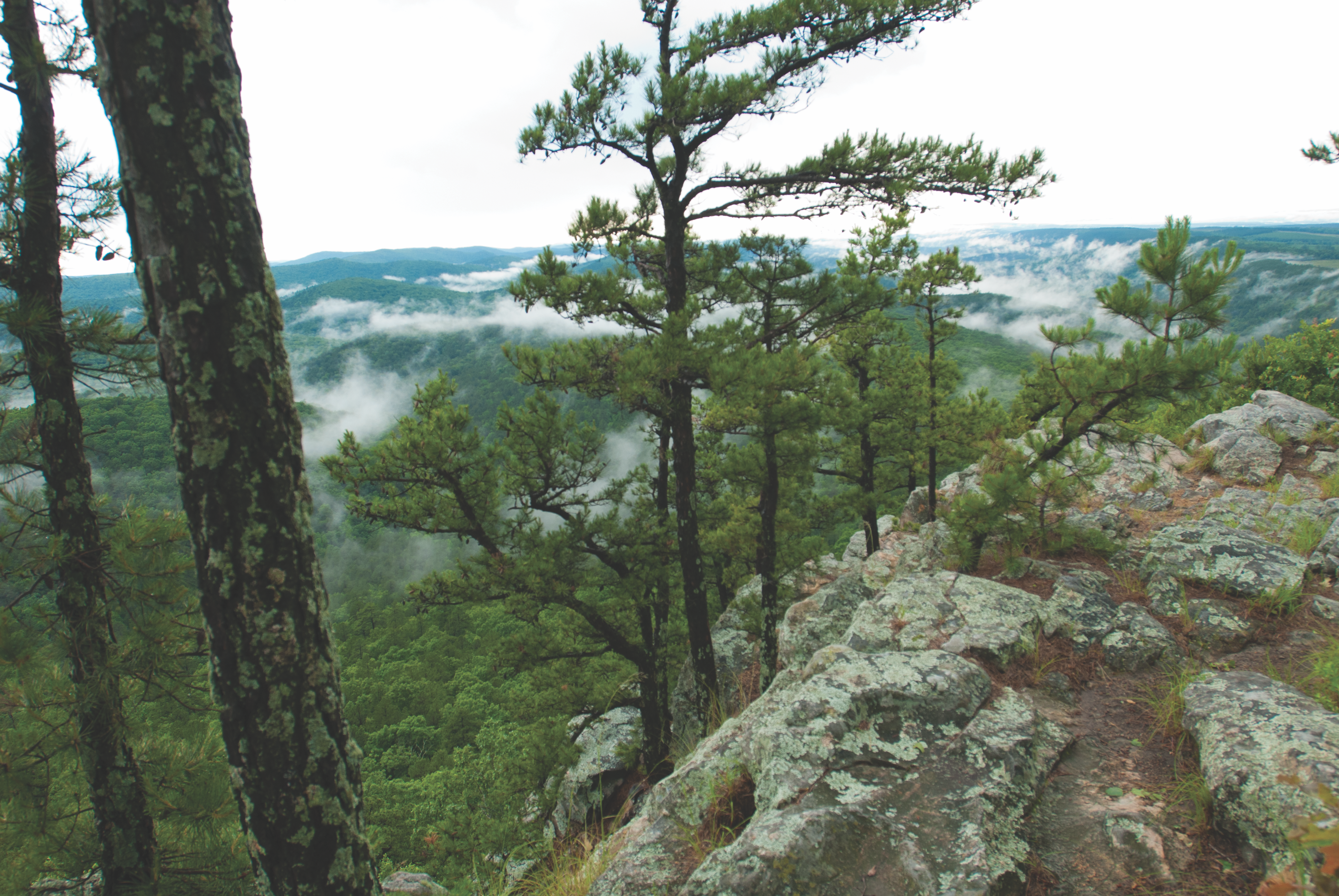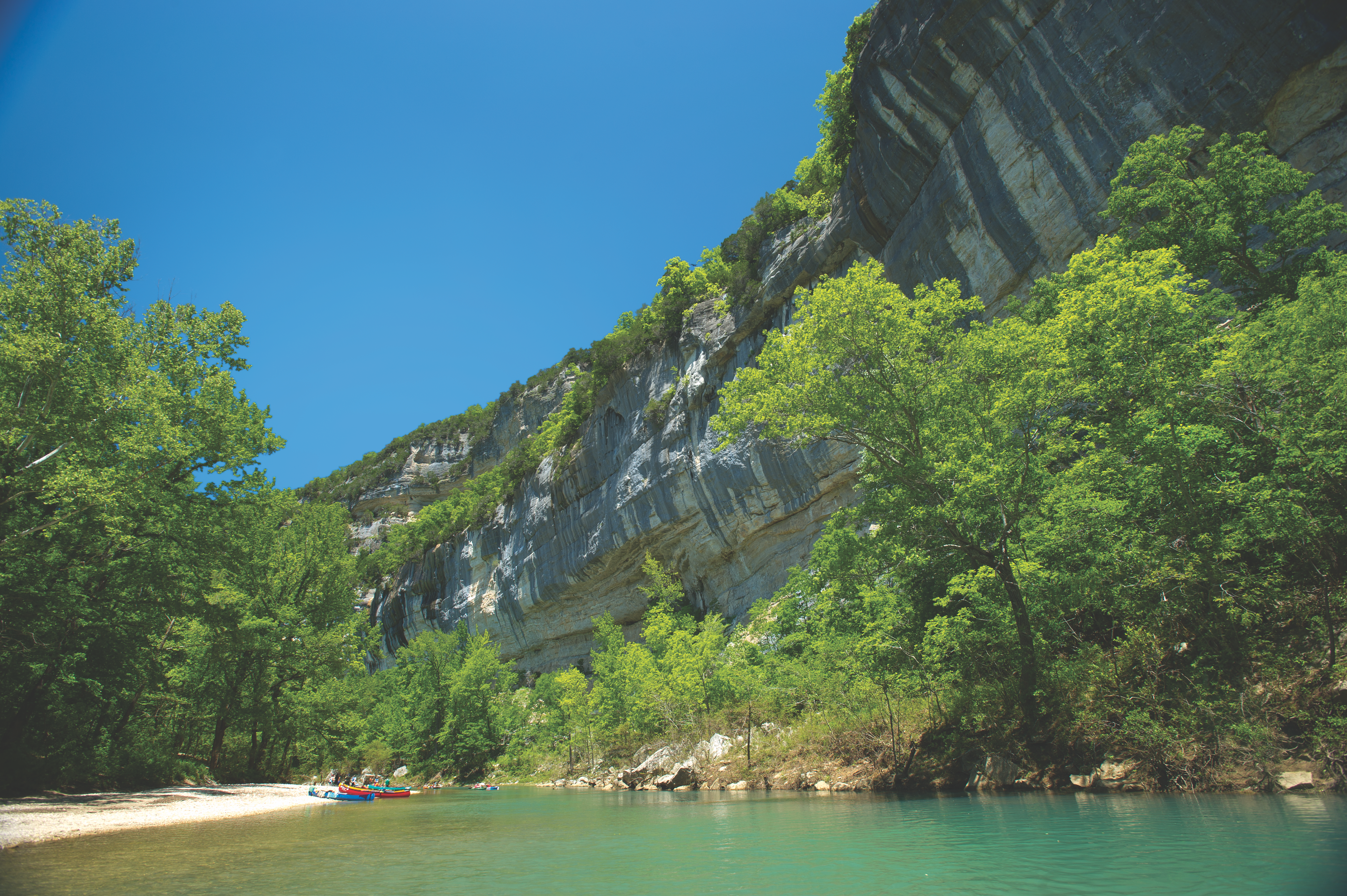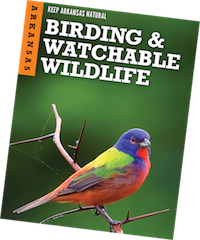Birding & Watchable Wildlife in Arkansas
Ready for a getaway to the great outdoors?
The beauty and diversity of Arkansas make it an exciting place for wildlife-watching throughout the year.
From songbird migration in spring to summer butterflies, from bugling elk in fall to vast winter flocks of waterfowl, there’s always something to see in The Natural State.
Paddle a whitewater stream where Bald Eagles nest, or take a lazy float along a baldcypress bayou under trees full of herons and egrets. Hike through a pine forest where endangered Red-cockaded Woodpeckers breed, or explore a wildflower-spangled prairie alive with butterflies. If you’re lucky, you might spot a black bear snacking on blackberries, or an alligator swimming through a bottomland swamp.
With dozens of parks and wildlife areas and millions of acres of national forest, Arkansas offers unlimited opportunities for discovery.
Wherever you are in our state, there’s a trail or woodland byway nearby. Get outside and enjoy!
Birding in Arkansas
Around 150 species nest, with others spending the winter here, passing through in migration, or occurring as rare wanderers away from their normal range. In May, it’s possible for an expert birder to record more than 150 species in a single day.
You’ll find the greatest variety of birds by visiting a diversity of habitats. Some birds inhabit pine woods, others hardwood forest, prairie, marsh or open water. Publicly accessible birding sites in Arkansas encompass all these habitats and many more.
Sought-after birds in Arkansas include the endangered Red-cockaded Woodpecker, as well as Brown-headed Nuthatch and Bachman’s Sparrow – all three residents of pine forest.
Once endangered, the Bald Eagle has made an encouraging comeback and now nests along rivers and lake shores throughout the state. Other popular birds include the beautiful Painted Bunting, the comical Greater Roadrunner and the brilliant yellow Prothonotary Warbler.
Arkansas wetlands attract large flocks of wading birds in late summer, often including Wood Storks and Roseate Spoonbills.
In winter, the state hosts some of the country’s greatest concentrations of waterfowl, with the Mallard often the most abundant in eastern Arkansas marshes and rice fields. The secretive Yellow Rail can be located in the same rice fields during harvest.

Arkansas Ecoregions
Arkansas’s natural diversity is reflected in its six ecoregions: geographic areas with distinctive plants and animals.
- Ozark Mountains – This eroded limestone plateau features clear streams and lush valleys where you’ll find smallmouth bass, nesting woodland warblers, and some of the state’s most beautiful scenery.
- Arkansas Valley – The central section of the state offers excellent sites such as Holla Bend National Wildlife Refuge and Mount Magazine, Arkansas’s highest peak and a paradise for birds and butterflies.
- Ouachita Mountains – Pine-oak forest covers much of this rugged region, home to some of the world’s rarest salamanders. Talimena National Scenic Drive near Mena gives a bird’s-eye view of the grandeur of the Ouachitas.
- Gulf Coastal Plain – The rolling hills here were once beaches along an ancient seashore. Today, vast pine forests host an abundance of white-tailed deer and populations of the endangered Red-cockaded Woodpecker.
- Mississippi Alluvial Plain – The famed Delta, created by meanderings of the Mississippi and Arkansas rivers, encompasses some of America’s most important bottomland hardwood landscape at sites such as the Cache River and White River national wildlife refuges.
- Crowley's Ridge – This narrow upland, formed from wind-blown soil deposited in the Ice Age, is home to plants found nowhere else in Arkansas, creating an ecosystem reminiscent of the Appalachians. Village Creek State Park is a great place to explore it.
Highlighted Regions
Ouachita and Ozark National Forests
Covering 1.8 million acres, the Ouachita National Forest offers a unique environment to visitors. As one of only two mountain ranges in the United States with ridges running east to west, its plant communities differ strongly from those elsewhere in the country. Thanks to its mature pine forest, the Ouachita area is home to rare species such as the Red-cockaded Woodpecker, as well as abundant whitetailed deer.

The 1.2-million-acre Ozark National Forest is one of the most geographically distinct areas of the state, especially under the surface. Horizontal layers of limestone have formed caves that are home to many kinds of wildlife including three species of endangered bats. The beautiful forests of the Ozarks are favored by Wild Turkey, elk and black bear, and create some of America’s finest fall foliage
Buffalo National River
Designated America’s first national river in 1972, Buffalo National River is 135 miles long and includes nearly 95,000 acres of public land along its corridor. Conservation efforts have assured that the Buffalo remains a pristine example of Arkansas’s environmental heritage, with clear water, spectacular bluffs and dense forest. The river and its surrounding lands provide the perfect setting for canoeing, fishing, hiking, wildlife watching, birding and other outdoor activities.

Mount Magazine
With majestic vistas of the Petit Jean River Valley and the Arkansas River, it’s no wonder that Mount Magazine has attracted visitors since the early 1800s. A 60-room lodge and conference center plus 13 cabins have been constructed on a bluff of 2,753-foot Mount Magazine, the highest point in the state. The mountain is home to a number of rare and endangered species of wildlife and butterflies. It represents a microcosm of various ecosystems found in The Natural State.


